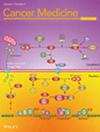A Review on Biomarker-Enhanced Machine Learning for Early Diagnosis and Outcome Prediction in Ovarian Cancer Management
Abstract
Background
Ovarian cancer (OC) remains the most lethal gynecological malignancy, largely due to its late-stage diagnosis and nonspecific early symptoms. Advances in biomarker identification and machine learning offer promising avenues for improving early detection and prognosis. This review evaluates the role of biomarker-driven ML models in enhancing the early detection, risk stratification, and treatment planning of OC.
Methods
We analyzed literature spanning clinical, biomarker, and ML studies, emphasizing key diagnostic and prognostic biomarkers (e.g., CA-125, HE4) and ML techniques (e.g., Random Forest, XGBoost, Neural Networks). The review synthesizes findings from 17 investigations that integrate multi-modal data, including tumor markers, inflammatory, metabolic, and hematologic parameters, to assess ML model performance.
Findings
Biomarker-driven ML models significantly outperform traditional statistical methods, achieving AUC values exceeding 0.90 in diagnosing OC and distinguishing malignant from benign tumors. Ensemble methods (e.g., Random Forest, XGBoost) and deep learning approaches (e.g., RNNs) excel in classification accuracy (up to 99.82%), survival prediction (AUC up to 0.866), and treatment response forecasting. Combining CA-125 and HE4 with additional markers like CRP and NLR enhances specificity and sensitivity. However, limitations such as small sample sizes, lack of external validation, and exclusion of imaging/genomic data hinder clinical adoption.
Conclusion
Biomarker-driven ML represents a transformative approach for OC management, improving diagnostic precision and personalized care. Future research should prioritize multi-center validation, multi-omics integration, and explainable AI to overcome current challenges and enable real-world implementation, potentially reducing OC mortality through earlier detection and optimized treatment.


 求助内容:
求助内容: 应助结果提醒方式:
应助结果提醒方式:


